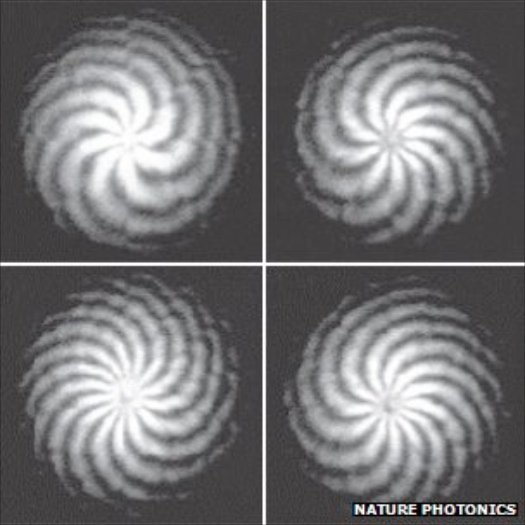Fiber optic cables were a sure improvement on regular copper wires. Using light, fiber optics, now used in telecommunications across the world, transferred data faster and more efficiently, not to forget that it could pack in more data than copper wires.

Twisted light beams have opened the door for wireless communication 85,000 times faster than broadband Internet speeds. The breakthrough could allow NASA missions or military space satellites to exchange data at ultrahigh speeds.
Lab tests have shown how twisted laser beams can transmit data at speeds up to 2.56 terabits per second — roughly the equivalent of beaming 70 DVDs worth of data in a single second through free space. Such speed easily put broadband Internet’s 30 megabits per second to shame.
In essence, the researchers were able to load a single light beam with 8 others, each carrying their own bundle of data, which when transmitted, travels as a single beam and upon arrival, is “unpacked” to reveal the beams compliment of data.
The international team hailing from the U.S., China, Pakistan and Israel used beam-twisting “phase holograms” that are able to twist light beams into a helical shape similar to that of DNA. Each beam’s individual twist can effectively create the equivalent of a new data stream channel — similar to a radio having separate channels — without the need for more bandwidth.
“We didn’t invent the twisting of light, but we took the concept and ramped it up to a terabit-per-second,” said Alan Willner, electrical engineering professor at the University of Southern California in Los Angeles.
The research team was able to do this using a technique that manipulated the light beam’s Orbital Angular Momentum or OAM. Angular momentum applies to light in two ways, that is, by its Spin Angular Momentum (SAM) as well as its Orbital Angular Momentum.
Thanks to its OAM, the light that is packed into the single beam, does not “wiggle” as in the case of SAM, but is compacted to twist around the beam of light, making the single beam far stronger.
Commenting, Juan Torres of the Institute of Photonic Sciences in Barcelona said about the present work that it “contributes a new chapter to the long history of telecommunications by demonstrating the potential of OAM… for increasing the transmission capacity.”




